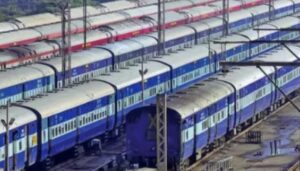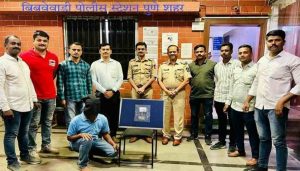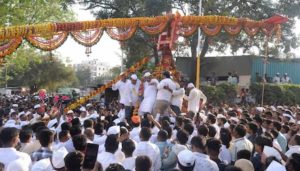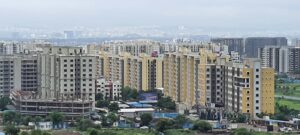Pune: Prof Dr Vilas Adhav Pens Pathbreaking Book On Farmers Plight
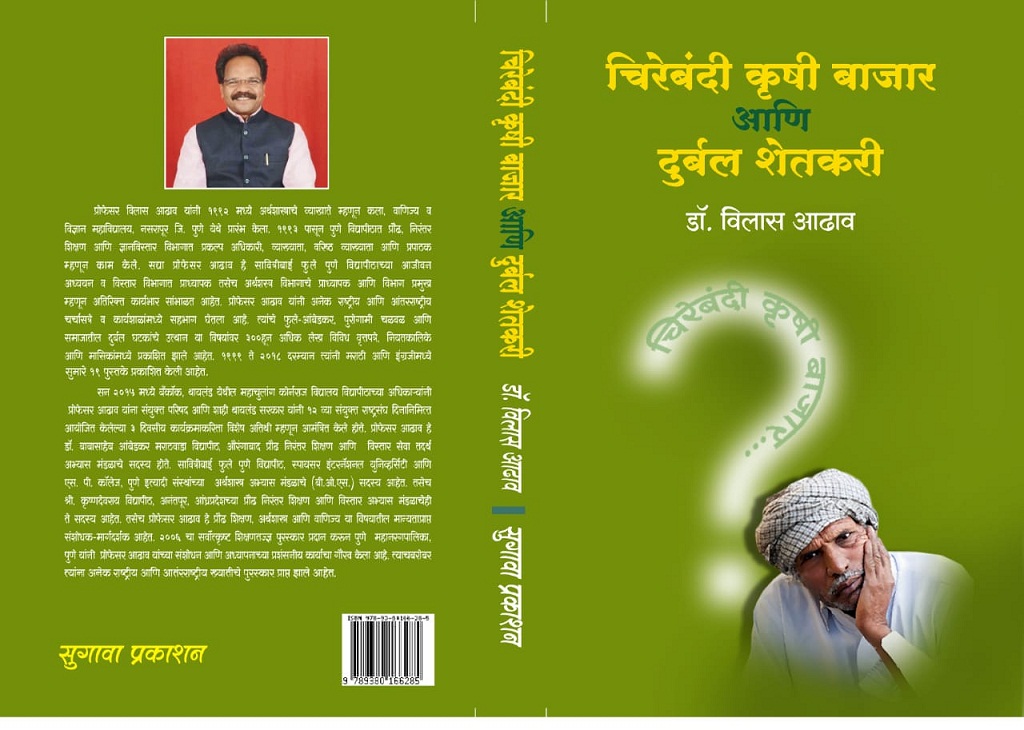
Pune, December 28, 2020: For decades together, the condition of farmers has been deteriorating day by day. Thousands of farmers have ended their lives due to dire circumstances. As per the survey conducted by the Indian Government through NSSO, more than 40% of farmers showed their readiness to quit farming altogether. Further, around 60 lakh farmers have quit farming and resorted to manual labour between 1991 and 2011 (Indian Census figures). The main reason behind all these is the inappropriate market rates given to the crops. In short, it has been an open truth that the Agri goods market has been working only towards the interests of certain groups, like a fortified castle. As numerous examples show, some traders have grown audaciously wealthy by entering these markets. This book tries to show us this distressing fact.
These facts keep pricking the conscience, and that is why the Indian government has passed three Bills on September 27, 2020, and taken steps to streamline the inter-state and inter-district sale of Agri goods, defying the boundaries of the Indian Agri Goods Market Committees. These bills also have provisions for e-business and have cancelled the market charges and other taxes. Truth be told, these Bills include quite a few provisions for the welfare of farmers. However, farmers today seem to trust the hearsay more; that is why they are protesting on the streets against these proposals. Perhaps they are dancing to the tunes of someone, but that doesn’t change the fact that these protests are hampering the Bills for reforming Agri goods markets today.
India was once upon a time known as the land of agriculture. After the financial liberalisation of 1991, the contribution of the service sector increased to more than half in the national income, as a result of which India’s economic development became service-sector dependent. Despite that, development of the agricultural sector must be a primary objective of any government even today because of its potential of job creation and the unique importance of Agri produce in terms of the nation’s population and food safety. A major problem in the agricultural sector is the Agri market, Agri goods marketing and its faults. This problem is compounded by the important elements of the caste system prevalent in society, particularly the rural society. October 2, 2020, saw the publication of the second edition of a book by Prof Vilas Adhav, titled Chirebandi Krushi Bajar ani Durbal Shetkari, and this book asserts through valid information that the already weak farmer proves to be further precariously positioned on the social scale. This book has been published by Sugava Prakashan on the background of the Bills passed on 27th September 2020, which stirred up the entire country by the first-ever farmers’ protests. This book therefore will have a great impact on economics students.
This book is divided into 9 chapters and the eminent devotee and commentator of Economics Prof R S Deshpande has offered a Foreword that presents the significance of this book rather accurately and also clarifies the direction of the book for readers. As an instance, “For many decades now, agricultural marketing has grown as per state regulations rather than market signals. All the initial policy steps were focused on commercial crops and in better-off regions, giving benefits to the haves. Markets served the top brackets.” The theoretical premise of this book, as the Foreword as well as the title of the book indicates, is that all in all, there were and still are many faults and lapses in the Agri marketing system, because of which agricultural market is like a fortified castle (strong and impenetrable), where the entry for farmers from the weaker sections is extremely difficult, and if at all possible, quite negligible and ignored.
The book then opens with Dr Babasaheb Ambedkar’s definition of the weaker sections. It moves on through the discussions on marketable surplus of farmers from the weaker sections, the interdependence of their dependency in the market and economic growth, relevant opinions of various economists such as Nicholas, Marx, Parthsarathi, Utsa Patnaik etc., their research and inferences, to show the difference between marketable and marketed surplus. For this study, the author used the medium of the regional survey, for which 160 farmers from 38 villages engaged in arable and horticulture farming from the Phaltan and Dahiwadi (Man) Talukas of Satara district were selected, with whom actual interviews were conducted and information was collected through questionnaires, and this information was collated for statistical analysis, finally culminating into conclusions.
Some assumptions have been made for this activity. For example, “the social and economic condition of farmers from the weaker sections is inferior and they lead a life of destitution” or “the land held by farmers from the weaker sections is small so it cannot produce a marketable surplus, which compels them to work as farm labour and the farmers from the weaker sections have to face differentiation and discrimination in all the three markets, viz land market, labour market and input market”. Through the details offered regarding the Pahaltan and Dahiwadi Talukas, the author introduces the readers to the financial, social and household conditions of the farmers from the weaker sections in these two Talukas. Prof Adhav leads the readers through the discussions of the market participation of the farmers from the weaker sections; their transactions; the crops they mainly cultivate; areas of land held; scheduled casts and tribes and their subgroups; credit supply to agriculture and ignorance of farmers from the weaker sections in the same; Maharashtra’s Agri Marketing Diagram; retail marketing and brokers therein; methods of determining the rates of Agri goods; and finally faults within the Agri goods marketing system, and ultimately brings readers to the conclusions of the research. While narrating this entire story to us, he makes a very important comment: Need is the biggest weakness of the farmers from the weaker sections, which is taken advantage of the organised traders, brokers and middlemen in the market; they purchase the Agri goods from the farmers from the weaker sections at lower rates and sell those at higher rates in the market, gaining exorbitant profits in the process.
For supporting this point, Prof Adhav has put forth some inferences in the seventh chapter, which may be considered the core of the research. In his opinion, the production cost of the farmers from the weaker sections is higher than that of other farmers (because the material required for production is sold to them at a higher rate while the buyer purchases the same at a lower cost from them) while the profits earned by them are much lesser than those earned by other farmers. When proposing this inference, he has drawn the income and expense curves for the farmers from the weaker sections and other farmers and shown the differences therein. As a result, farmers from the weaker sections do not obtain secure profits, forget minimal profits. Along with this fundamental conclusion, this book also brings into discussion various points such as the crop methods used by farmers from the weaker sections, their labour costs, consumption costs of the family, irrigation, acceptance of improved farming methods, marketable surplus with reference to specific crops (sugarcane, groundnut, sunflower, jowar, wheat, maize etc.). In order to underline the main assumption, he has used the example of the defiant activist in the Ambedkarist movement, namely Dadasaheb Gaikwad, and his efforts in 1926 that was made unsuccessful due to casteism, which highlights the plight of the farmers from the weaker sections. An important point made by the author here is this: Caste-based production system has been a salient feature of the Indian economy. The lower castes were denied the freedom of production, freedom of profession, and ownership of production equipment.
However, the information provided while stating that farmers from the weaker sections must face many problems on the social and financial levels due to being ignored in the Agri marketing clarifies the picture till 2002-03. When going through this book, it seems natural to think that the information after 202-03 might present a different picture, but perhaps commercialisation has further weakened the farmers from the weaker sections and many of them might have migrated to the cities after selling their land. The reason is that updated information is crucial in the study of Economics, so it would be a reasonable expectation that the next edition sheds light on this issue. Further, some details seem to be repeated in some places, perhaps intentionally, for emphasis, but avoiding such repetition might offer qualitative improvement. Nonetheless, it is certain that this book will bring about brainstorming on various points in the thinkers’ and educationists’ circles and aid further researchers.

